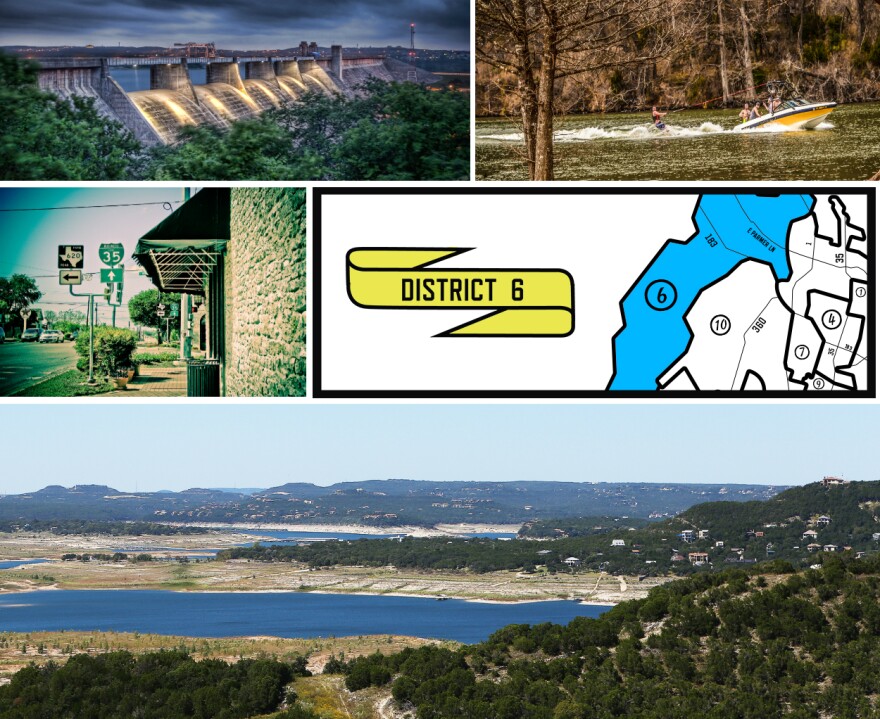Austinites are voting in 10 different geographically drawn city council districts this election year. It’s a big change from the former at-large system.
This week, we’re continuing our look at each of the city's districts and their needs. Today, we look at District 6, a district that is geographically one of the longest, stretching from Lake Travis all the way to Jollyville on the Austin-Round Rock border.
Ranch to Market Road 620 follows the rocky canyons and rolling hills of District 6, snaking through most of the district's western edge the district.
But District 6 is much more than postcard scenery. It's a district made largely of commuters.
And what’s a marquee issue those voters care about? Traffic.
“It shouldn't take me 45 minutes to get to and from work when I live 10 miles from downtown,” says District 6 resident Jessica Dvorsak. The young mother of two works for KXAN, and nine years ago when she and her husband bought their place in District 6, Austinites were already complaining about traffic.
Since then, things have worsened dramatically.
“I feel like additional roads – additional options for traveling north, south, east and west – I don't know necessarily that toll roads are the answer,” she says. “Having said that, I do take toll roads. I don't take them every day, and I certainly don't plan on taking the toll on MoPac, even though I travel on MoPac every day."
There's never just one thing that needs to be done, says traffic expert with Stack Traffic Consulting Brian Wagner, a California-based group. It's a combination of things.
“The old guard was a matter of utilizing the real estate,” he says. “Meaning that we were able to widen roadways to accommodate larger volumes of traffic.”
Wider roadways in District 6 could help alleviate traffic, but Wagner says today's approach in growing cities, like Austin, includes much more.
“We don't widen roadways,” he says. “We just make those roadways more efficient with newer technology.”
Wagner studies traffic patterns. In highly urbanized areas, he advises cities to control traffic lights according to traffic flow. He develops patterns that technicians can program into the system in case the traffic is due to something unusual, like an accident. In some cities, fixing a single intersection helps ease the traffic that backs up in surrounding areas.
But RM 620 is different. The traffic there isn’t a light-timing issue.
“Without the ability to widen a roadway, you have just two options, really, right?” Wagner suggests. “One is to get cars off the road by providing alternate modes of transportation, and the other is to get the most out of the existing system.”
There are existing plans for FM 620. The Capitol Metropolitan Transportation Authority (CAMPO) the regional transportation authority is looking into some fixes that are available in its 2040 plan.
And the City of Austin is also looking into alternative ways to get cars off the roads. It's just one of the challenges one of the six candidates running for District Six would like to address once they are elected to the new Austin city council.





